Post updated: 2025/08/22
Winter is just around the corner, and your body has to work hard to cope with the cold weather. As you may know, the preparations for immunization of the body shall start just at the beginning of the fall, but if you forgot, no worries you can still do something. Apart from vitamins and vitamin D, you need probiotics.
Do you know what probiotics are and how to take them? Can probiotics help you in the cold season? Continue reading as I will answer you at these questions and I will also give you the top 5 best probiotics list.
Because some of the products contain probiotics and prebiotics and postbiotics. I give you some information about them. Sometimes could be confusing and you should know the differences. Both prebiotics and probiotics have an essential role in sustaining your body health.
What Probiotics Are?
Probiotics are the living bacteria and yeasts that live in your body and keep your bowel health healthy. These friendly bacteria maintain good bowel function by digesting food, destroying harmful pathogens and producing vitamins.
Probiotics are particularly useful after an antibiotic treatment because they destroy both infectious and beneficial bacteria. For me, the antibiotic treatment is the last option, but if it’s something severe, then I take antibiotics. The antibiotics solve many issues, but let’s don’t jump on taking them at the first sign of flu.
Élie Metchnikoff, known for his pioneer research in immunology has suggested the possibility of intestinal colonization with good, friendly bacteria, also called probiotics, at the beginning of the 20th century.
A healthy person has around 100 trillion bacterias in the bowel, and they have to be renewed and sustained by quality probiotics and fermented foods. The fermented foods are the best source of natural probiotics.
Probiotics are considered natural antibiotics in the sense that they help to fight harmful bacteria. Keep in mind that probiotics are protective substances to stop the process of developing harmful bacteria by producing, for example, lactic acid or hydrogen peroxide. Probiotics support the immune system and strengthen us in the face of diseases.
Many of us do not know what probiotics are, but we know that yogurt, kefir or pickles are healthy. I recommend eating many homemade yogurts and pickles obtained by fermentation (not with vinegar) because they contain the most probiotics.
These beneficial bacteria and microbes that live in the intestines play an important role in digestion, but more than that, they are a real ally in the cold season: they stimulate the immune system, produce antibodies, fight infections and have antiviral activity.
Deficiency in the body of probiotics is the main cause of digestive problems, as well as other health problems such as decreased immunity and the recurring appearance of seasonal cold diseases.
What Prebiotics Are?
The prebiotics is totally different than probiotics. The prebiotics are not living organisms, are soluble fibers, and they cannot be digested in the stomach. See prebiotics as food for probiotics. Some of the prebiotics can be found in garlic, lentils, asparagus, walnuts, leek, onions.
What Postbiotics Are?
Postbiotics are compounds produced during the fermentation process of probiotic bacteria. When probiotics feed on certain types of molecules to multiply, they leave behind what is called postbiotic. To stimulate postbiotic production, some of the best supplements you can take are spirulina, chlorella, fermented aloe Vera, apple vinegar, and coconut vinegar.
Aliments That Contain Probiotics
Some foods that contain natural probiotics and let’s see some of the most known.
Yogurt
The yogurt is probably the most known aliment associated with the addition of probiotics in the body, yogurt also brings a whole series of benefits to the body: it improves digestion and immunity of the body, prevents osteoporosis and colon cancer and helps lower blood pressure.
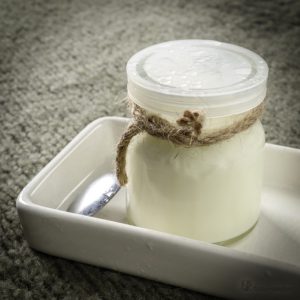
“The best results are obtained from the consumption of natural yogurt, prepared in the house of pasteurized milk, and not from the one found in commerce. It is especially important to avoid shop fruit because they contain corn syrup rich in fructose, artificial sweeteners, preservatives and synthetic flavors that will bring more health services than an important portion of beneficial bacteria.
And kefir is an important source of probiotics. Often considered to be just another type of yogurt, kefir is actually a fungus that grows in milk-producing ferments, enzymes, vitamins, minerals, and other bioactive substances. This food also has beneficial effects on the digestive tract, being at the same time a good antioxidant. Moreover, it hurries the intestinal flora restoration and prevents digestive problems that can occur after antibiotic treatment.
Dark Chocolate
One of the few desserts beneficial to the body, dark chocolate, is rich in antioxidants and has an energizing effect. Besides, dark chocolate is also noticeable by the probiotics it provides to the body.
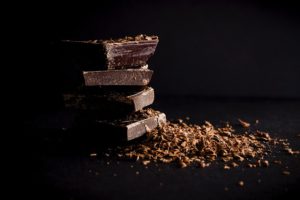
As long as it has a high concentration of cocoa and a low sugar content or synthetic sweeteners, black chocolate is a good ally of health.
Kombucha Tea
It is considered a true elixir of health, this tea is obtained using live Kombucha culture in green tea or black tea and is used for centuries to increase energy levels, improve mood and lose extra pounds. More about the tea, how to prepare it yourself you can find in my article ‘ Kombucha Tea Benefits’.
Also, the bacteria in the Kombucha cultures are probiotic and function in the same way as the active bacteria cultures of yogurt.
Soy Milk
A substitute for animal products and not only, but soy milk also brings many benefits to the human body. With its content of probiotics and live cultures of bacteria, it helps maintain a healthy digestive system. A single cup of soy milk offers plenty of essential nutrients to strengthen the body before the cold season: it contains 25-31% calcium, 11-31% vitamin D, 89-125 calories, 5 grams of fat (0.4 grams of fat saturates), 6-10 grams of protein and is rich in essential fatty acids omega 3, antioxidants and vitamin E, which help fight infections.
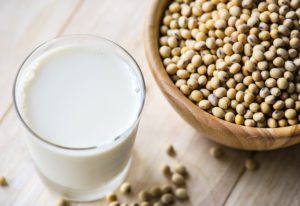
Although daily diet can be an important source of probiotics, in some cases it is recommended and more effective to treat probiotics to restore normal intestinal flora and immunize the body.
Most commonly, antibiotic treatment, although it destroys infections, at the same time “kills” and cultures of bacteria beneficial to the organism. After such a cure, the microbial balance must be restored as quickly as possible in order not to cause other problems.
Pickled cabbage
This non-traditional dish is a source of probiotics, being prepared by fermentation, with natural ingredients.
In addition to this health benefit, live cabbage crops can also be useful in relieving allergies and, also, is an excellent source of vitamins B, A, E, and C.
Best Probiotics
I will recommend you some probiotics which I have used and taken today. The products are similar in regard to composition.
I suggest you should start with 15, 30 or 50 billion bacteria and try which one works for you. The price will vary based on the bacteria number. You should look for products that contain Lactobacillus Plantarum found in milk products and vegetable fermentation like pickles as I mention above.
1. Garden of Life – Primal Defense – 90 or 180 vegetable capsules
Primal Defense ULTRA contains 15 billion CFU (colony-forming units) probiotic supplement from 13 different bacterial strains per capsule and essential for optimal intestinal flora. This makes this product unique of its kind.
Dosage: Start with 1 capsule and then go up to 3 capsules a day between meals. You can take the capsule on an empty stomach with a large glass of water.
When traveling: 1-2 capsules per day starting 2 weeks before the trip, end 1 week after returning. This makes you have a good intestinal flora when confronted with foreign bacteria, which is the best guarantee against tourist diarrhea. Most of the diseases you get abroad are due to bad bacteria in water and food. A piece of advice is just to drink bottled water.
The recommended dose should not be exceeded. Nutritional supplements should not be used as an alternative to a varied diet. Store dry and out of reach of children.
Ingredients per capsule: 410 mg HSO Lactic acid bacteria (5 billion) of Saccharomyces boulardii, wheat grass *, wheat grass * (* for the fermentation process), Lactobacillus Plantarum, Bacillus subtilis, Lactobacillus paracasei, Bifidobacterium longum, Lactobacillus brevis, Bifidobacterium bifidum, Bifidobacterium breve, Bifidobacterium lactis, Lactobacillus acidophilus, Lactobacillus salivarius, Lactobacillus rhamnosus, Lactobacillus casei, 290 mg ionised herbal minerals, 1.8 mg, iron from ionic herbal minerals, vegetable capsule made of cellulose, magnesium stearate (vegetable source) and rice maltodextrin.
I personally take ‘Primal Defense’ probiotics from Garden of Life. Taking daily probiotics, I notice quick digestion, clear skin and better moods. I start taking them during summer, and I didn’t get any could during that fall and winter.
2. Renew Life – Ultimate Flora Probiotic Extra Care 150 billion CFU – 90 vegetable capsules
The product contains 50 billion CFU from 12 different bacterial strains per capsule, helping your immune and digestive health. The product is soy, gluten and dairy free.
Dosage: Take 1 capsule daily with a large glass of water, and you can take it on an empty stomach.
Ingredients: Bifidobacterium lactis, Bifidobacterium bifidum, Bifidobacterium breve, Bifidobacterium longum, Lactobacillus acidophilus, Lactobacillus casei, Lactobacillus Plantarum, Lactobacillus paracasei, Lactobacillus salivarius, Lactobacillus rhamnosus, Lactobacillus bulgaricus.
3. Dr. Tobias Deep Immune Probiotics – 4.4 Billion Probiotic Booster PreforPro
The product contains 4.4 billion CFU from 4 strains from Booster PreforPro. The bottle contains 60 vegetable capsules.
Dosage: Take 2 capsules daily preferably will meals.
Ingredients: Bacillus subtilis, Bacillus coagulans, Lactobacillus acidophilus, Bifidobacterium lactis and PreforPro (Myoviridae, Siphoviridae, Myoviridae, Myoviridae)
4. Dr. Ohhira Probiotics – 60 capsules
The product contains 12 probiotic strains with pre, pro, and postbiotics formula.
Dosage: For maximum effect, a loading dose of five capsules consumed twice daily, for a total of ten capsules per day, for six days (or as directed by a healthcare professional). After that, two capsules daily. Best results when taken on an empty stomach in the morning and at bedtime with water.
Ingredients: The product probiotics are obtained through a long process of fermentation of fruits, vegetables, mushrooms and seaweed which contain lactic acid bacteria blend. The probiotics are derived from this and incl. Bifidobacterium breve, Bifidobacterium infantis, Bifidobacterium longum, Lactobacillus strains of acidophilus, brevis, bulgaricus, casei, fermentum helveticus, Plantarum, and Streptococcus thermofilus. It also contains pre-biotics.
5. NOW Foods Supplements, Probiotic-10™, 25 Billion, with 10 Probiotic Strains – 30 veggie capsules
The product contains 17.25 billion CFUs per 1 capsule from 23 strains multi-probiotic and other 21 probiotics with prebiotic.
Dosage: Daily, 30 minutes before a meal, take 1 capsule. For additional support, take up to 3 capsules per day, but consult your doctor.
Ingredients: Accharomyces boulardii (S. boulardii), Bifidobacterium infantis (B. infantis), Lactobacillus acidophilus, Lactobacillus delbrueckii, Lactobacillus rhamnosus, Lactobacillus plantarum, Lactobacillus casei, Lactobacillus helveticus, Lactobacillus salvarius, Lactobacillus lactis, Lactobacillus paracasei, Lactobacillus brevis, Lactobacillus gasseri, Enterococcus faecium (E. faecium), Streptococcus thermophilus, Bifidobacterium bifidum, Bifidobacterium breve, Bacillus coagulans, Bacillus subtilis, Bifidobacterium longum
Takeaways
You learned what probiotics are, why you need to take probiotics and which aliments contain probiotics. By now, you should be able to make a difference between prebiotics, probiotics, and postbiotics. All these biotics can be found in aliments and have a role in your digestive and body health.
I shared with you the 5 probiotics which I tried and currently, I take ‘Primal Defense’ probiotics from Garden of Life. Taking daily probiotics, I notice quick digestion, clear skin and better moods.
Are you ready to take your probiotics? Which probiotics do you use? Which one gave you the best results? I would love to hear your thoughts.
Like always, give the article a LIKE, SHARE and COMMENT if you enjoy it.
Stay healthy!

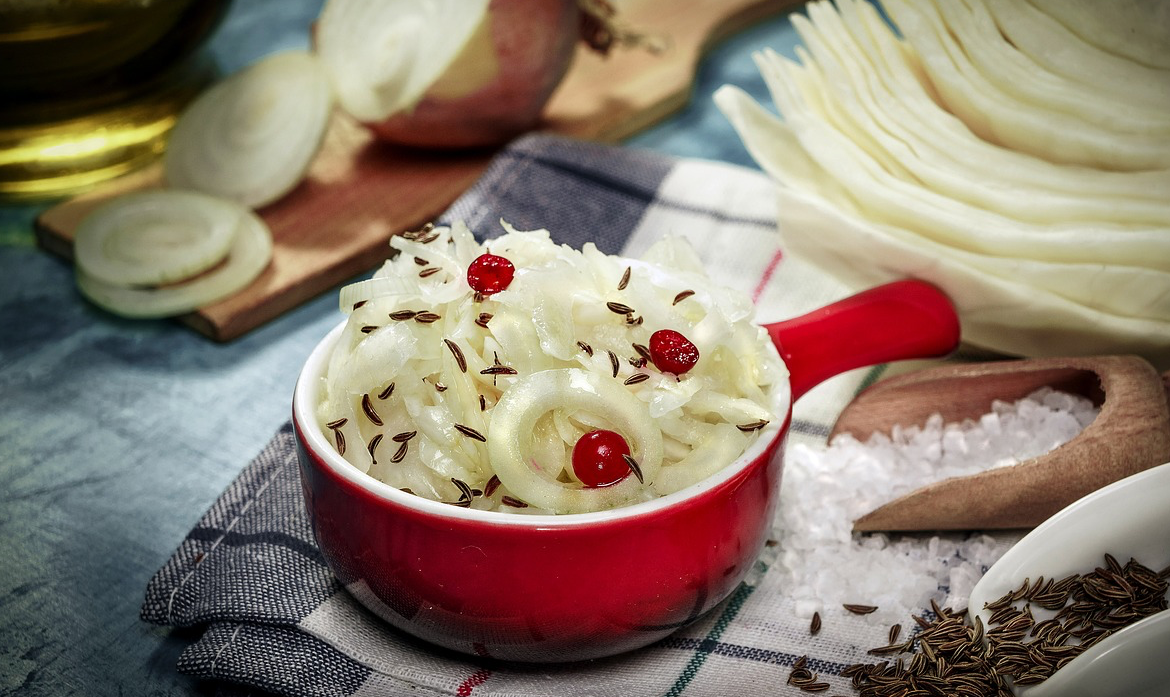




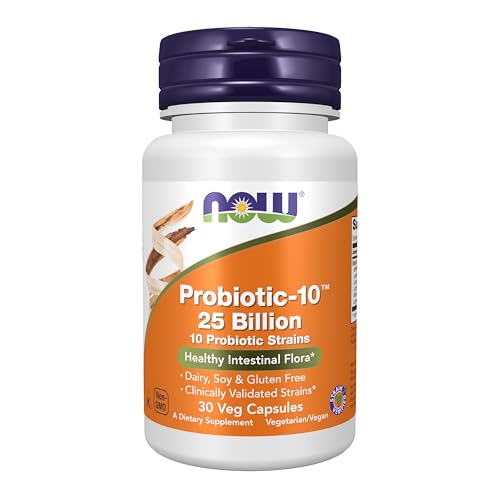
Probiotics break down the fibers and allow us to digest vegetables. They are not very useful for an all-meat diet. The hydrochloric acid in our stomachs breaks down the meat for us. The more vegetables that you eat, the more pro and pre-biotics that you will need. I used to take a probiotic, but haven’t needed one in years.
Thank you for your comment, Melinda.
I eat a plant based diet and the probiotics helps a lot, apart from the other benefits. The probiotics help me with the immunization, and I didn’t get any flu for several years.
Stay healthy!